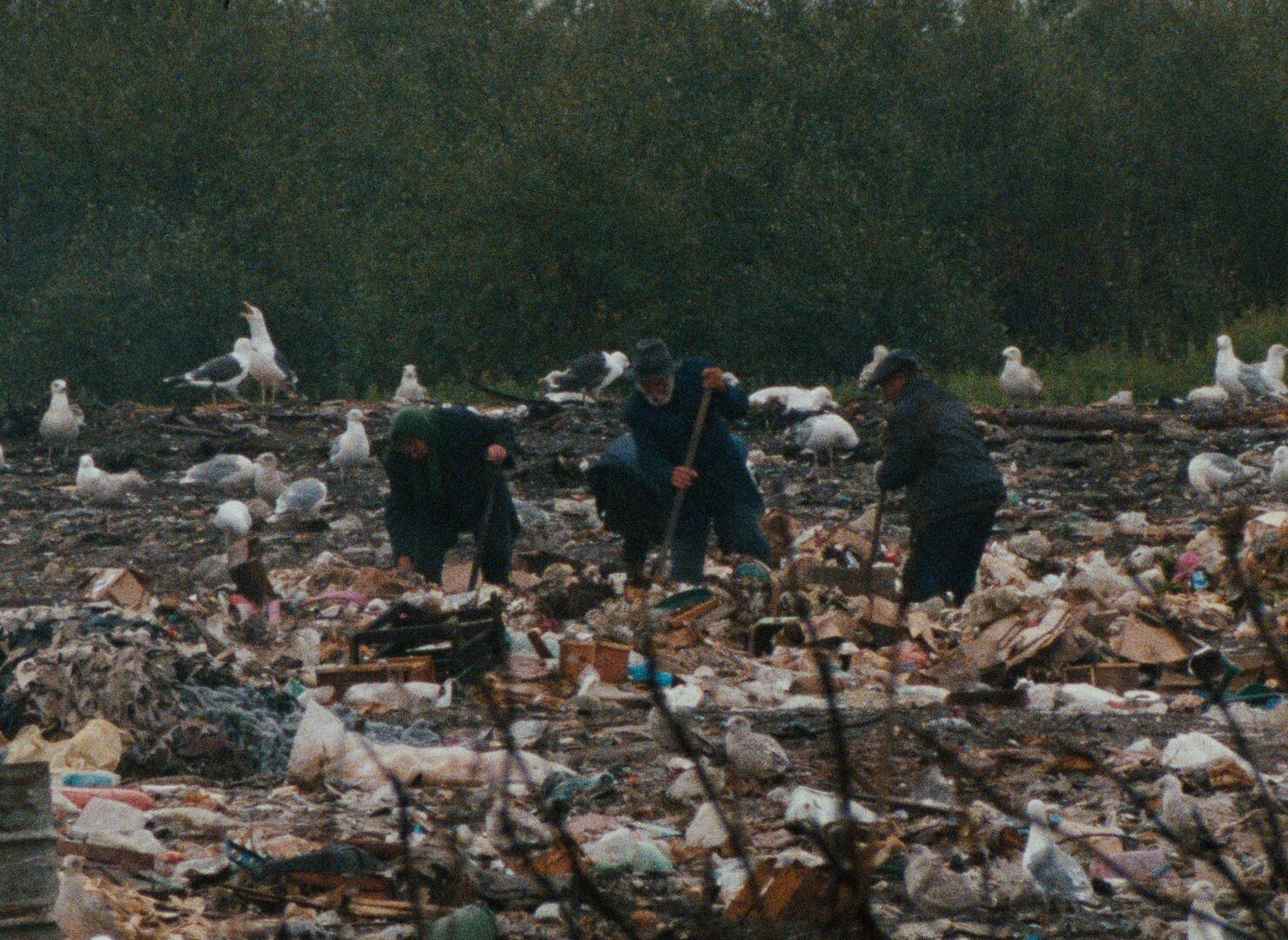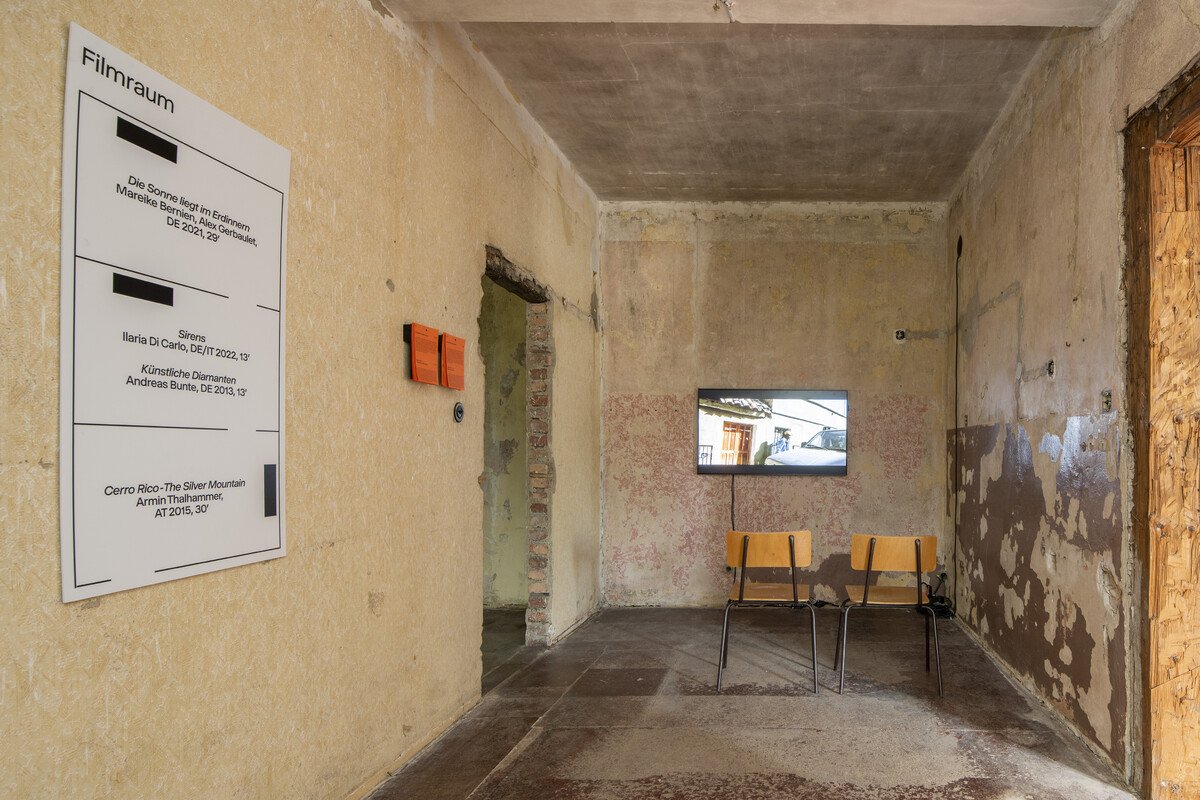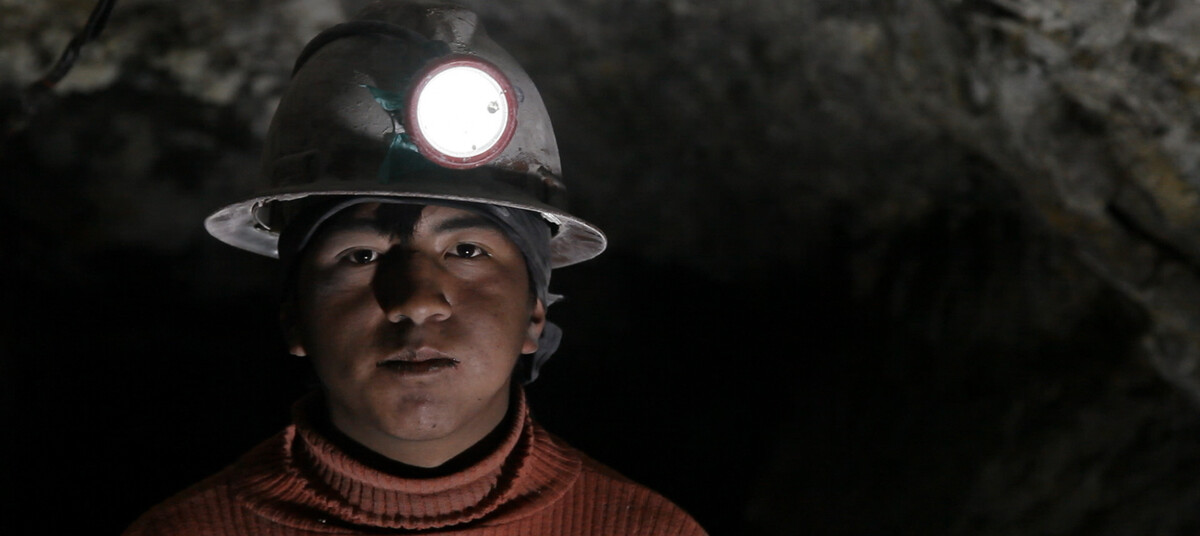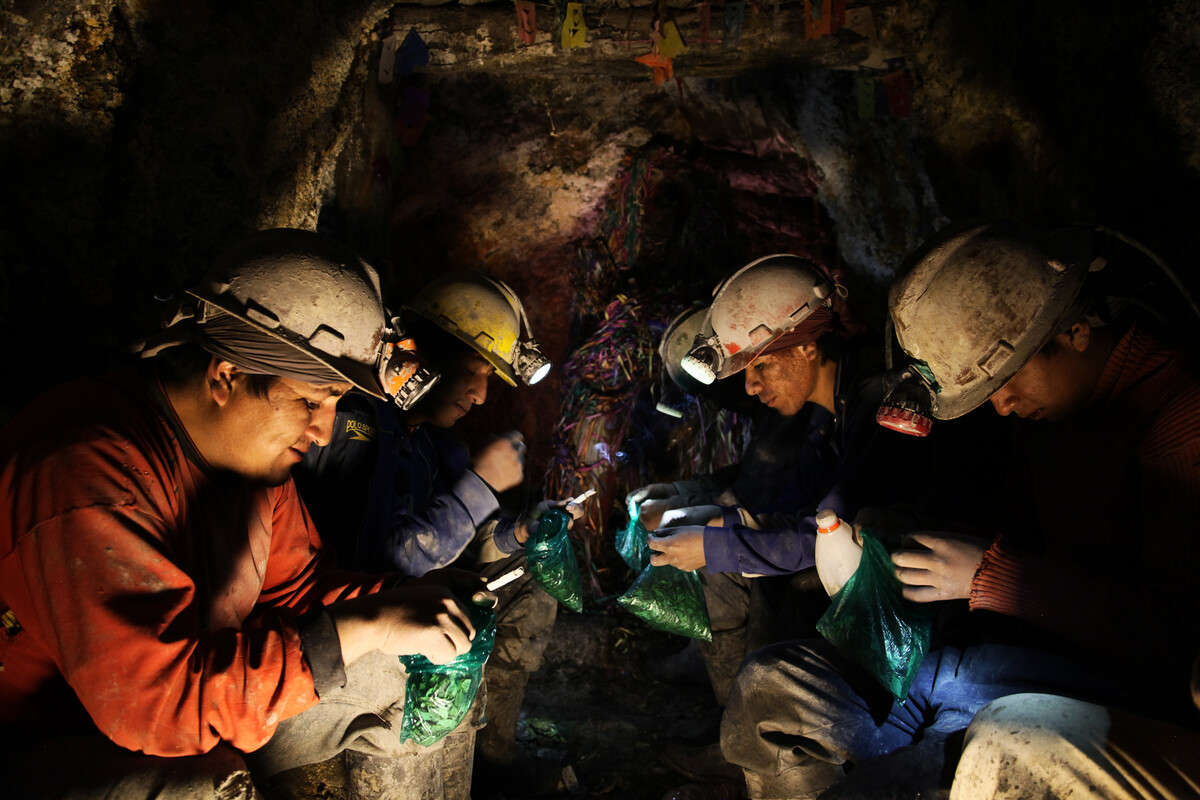Films
Films
The film program of the Werkleitz Festival 2023 includes a film room as part of the exhibition in Wiederstedt and a three-part film series at the Zazie Kino in Halle. The films, which are curated by Florian Wüst, look beyond the Mansfeld region to explore the history and the current state of mining economy.
From northern Europe to South America, the exploitation of deep layers of the earth bears witness to the violence of colonial land seizure, displacement, and environmental destruction. Mineral resources are the material basis of modern life as we know it, and this way of life is finally reaching its limits against the backdrop of social inequality, energy crisis, climate change, and species extinction. The four short films by Mareike Bernien & Alex Gerbaulet, Andreas Bunte, Ilaria Di Carlo, and Armin Thalhammer presented at the Inspektorhaus dissect space and time, set labor and technology, landscape and environment in relation to each other: the geological and narrative sediments of the Ore Mountains as a radiant legacy of the nuclear age, the artificial production of diamonds as a physical miracle and an attempt to find a way out of geopolitical dependencies, the bizarre open-pit mines and power plant landscapes of the East and West German coal industry as incomprehensible memorials of an industrialized nature, and the silver mining in Bolivia’s Potosí as the epitome of the centuries-old exploitation of indigenous labor.
Filmprogramm in Halle
The film program of the Werkleitz Festival 2023 includes a film room as part of the exhibition in Wiederstedt and a three-part film series at the Zazie Kino in Halle. The films, which are curated by Florian Wüst, look beyond the Mansfeld region to explore the history and the current state of mining economy.
From northern Europe to South America, the exploitation of deep layers of the earth bears witness to the violence of colonial land seizure, displacement, and environmental destruction. Mineral resources are the material basis of modern life as we know it, and this way of life is finally reaching its limits against the backdrop of social inequality, energy crisis, climate change, and species extinction. The four short films by Mareike Bernien & Alex Gerbaulet, Andreas Bunte, Ilaria Di Carlo, and Armin Thalhammer presented at the Inspektorhaus dissect space and time, set labor and technology, landscape and environment in relation to each other: the geological and narrative sediments of the Ore Mountains as a radiant legacy of the nuclear age, the artificial production of diamonds as a physical miracle and an attempt to find a way out of geopolitical dependencies, the bizarre open-pit mines and power plant landscapes of the East and West German coal industry as incomprehensible memorials of an industrialized nature, and the silver mining in Bolivia’s Potosí as the epitome of the centuries-old exploitation of indigenous labor.
Erde ohne Boden [Earth without Soil]
The short film program Erde ohne Boden [Earth without Soil] points to the world-changing forces of both human agency and “geopower”: the earth forces that represent the pre-political conditions of territorialization and help determine social reproduction, according to geographer Kathryn Yusoff. Until now, only “biological” subjects have been given importance in Western-style anthropocentric thought and action. But the Earth has long been striking back in the form of climate change. Two of the films in Erde ohne Boden focus on the production of raw materials in the GDR; they provide a preview of the festival exhibition in Wiederstedt, where they will be shown in the Inspektorhaus. Sonne Unter Tage [Sun Under Ground] by Mareike Bernien and Alex Gerbaulet follows the radioactive traces of uranium mining in the Ore Mountains operated by SAG Wismut: the soil as an archive of technical and social utopias. The natural formation of diamonds, which takes place under extreme pressure and temperature conditions in the Earth’s mantle, can be simulated, as Andreas Bunte’s Künstliche Diamanten [Synthetic Diamonds] meticulously documents. This invention was intended to make the GDR more economically independent. In Adina Camhy’s Crater, too, a geological phenomenon – various terrestrial and extraterrestrial craters – forms the starting point for an artistic reflection on past moments of violence and the impossibility of capturing the world without gaps. Whether ever higher or ever lower, Stéphanie Lagarde’s Minimal Sway While Starting My Way Up describes the impetus of architectural expansion as an expression of our relationship to the environment, from the perspective of an intelligent elevator plagued by self-doubt.
Followed by an audience discussion with Mareike Bernien, Andreas Bunte and Alex Gerbaulet, moderated by Florian Wüst.
Die Nordkalotte [The North Calotte]
Media
Stills aus Die Nordkalotte
© Peter Nestler 1991
North Calotte is the name given in Scandinavia to the harsh, barren, but also fascinating landscape at the very edge of Europe: the border region of Norway, Sweden, Finland and Russia. This is where the once nomadic Sámi people settled with their herds of reindeer. Peter Nestler’s Die Nordkalotte [The North Calotte] is a documentary about the history, traditions, and understanding of nature of the Sámi. Over centuries, they have learned to adapt their needs to the climatic conditions of the Arctic Circle. Today, the Sámi are a minority in their own country, with many working in modern professions and living in cities, while the natural resources of the region are increasingly being lost. Dams have been built to generate electricity, forests cleared without hesitation, and huge excavators rummage through the earth for ore and nickel, turning everything upside down. Nestler criticizes industrial society that is covering the most remote regions with large-scale projects and is sacrificing the ecological balance for the sake of profit. But that’s not all: when the Chernobyl reactor burst in April 1986, its nuclear toxic loads also reached the far north. As in many of his films, Nestler also uncovers traces of the Second World War here. He tells the story of a successful escape from the Germans. At the end, Die Nordkalotte once again takes us back to the way the Sámi deal with nature, which is not aimed at subjugating it but at achieving a spiritual harmony between humans and creation.
Followed by an audience discussion with Tobias Holzlehner (MLU Halle-Wittenberg) and Judith Miggelbrink (TU Dresden), moderated by Florian Wüst.
DE 1991, 90'
Schnitt ins Land [Cut into the Land]
The Geisel Valley south of Halle is now a lake landscape created by the flooding of several redundant open-cast mining holes. The lignite of the Geisel Valley was located close to the surface. This meant that comparatively little overburden had to be moved, which favored the almost complete decarburization of the deposit by 1993. In the GDR, the term “Umkohlung” was used when villages were dredged and people resettled to make way for open-pit lignite mining. In his first DEFA documentary Umkohlung, made in 1965, Thomas Kuschel gives a voice to those affected and paints an extraordinarily critical picture of the consequences of a fossil fuel energy policy that continues to destroy nature and culture today. The program Schnitt ins Land [Cut into the Land] links Kuschel’s film with the portrait of rural working and family conditions in current films by Marian Mayland and Alexandra Tatar. Mayland explores the extent to which the 1980s brought about end-of-life feelings on both a personal and societal level in a conversation with her parents and brother, set in the domestic surroundings of the former, badly running market garden of her parents in a small West German town next to a military training ground. The monotony of industrialized landscapes is not only the result of evisceration but also of large-scale agricultural use, the profitability of which is often achieved on the backs of precariously paid harvest workers from Eastern Europe. The Romanian artist Alexandra Tatar exposed herself to this experience together with her mother in an Austrian wine-growing region: Mâna care taie [Cutting Hand] testifies to the deep imbalance of European integration.
Followed by an audience discussion with Marian Mayland and Alexandra Tatar, moderated by Florian Wüst.
Film room
Media
The settlement of Potosí was founded in 1545 at the foot of the Cerro Rico, a pointedly towering mountain in the Bolivian highlands. Here, where the Incas had already extracted silver, a profitable mining industry developed in the years that followed, providing the Spanish royal family with desperately needed foreign currency. The world’s first mining academy was founded here; with a population of 150,000, Potosí was one of the largest cities of the 17th century. Attached to this story of immeasurable wealth is an even more immeasurable story of sweat, blood, and death: the mita, a system of tribute payment through labor, forced the indigenous population into the mines by the thousands. Potosí became the universal symbol of an inhumane and environmentally destructive colonialism, but the story goes on: Under the hardest working conditions, the last remains of precious metals are still being scraped out of the perforated mountain today.
The film room of My Precious in the Inspektorhaus presents four artistic-documentary short films by Mareike Bernien & Alex Gerbaulet, Andreas Bunte, Ilaria Di Carlo, and Armin Thalhammer, which fan out the social, technical, and ecological contexts of extractive economic activity: from Potosí to the radiant legacy of uranium mining in the Ore Mountains and the artificial production of diamonds near Potsdam as a way out of geopolitical dependencies, to the bizarre open-pit mining and power plant landscapes of the East and West German coal industry.
Cerro Rico – The Silver Mountain
Media
Stills aus Cerro Rico – The Silver Mountain
© Armin Thalhammer 2015
In 1545, a silver vein was discovered in the Bolivian highland, in a mountain that became the source of European wealth. Under its shadow, the city of Potosí was founded, which rapidly grew into the world’s richest city. Today, the shine of the heyday is long gone. Since the discovery of the lode of silver, however, not too much has changed in terms of working conditions. Around 15.000 miners are still digging themselves through the mountain in order to scratch the last silver reserves off the rock face. Armin Thalhammer’s debut film offers an impressive insight into the hard daily routines of Cerro Rico’s miners. Dust, headlights and hollow hammering generate a unique and bizarre scenery at one of the most dangerous workplaces.
Armin Thalhammer, AT 2015, 30'
Die Sonne liegt im Erdinnern [The Sun Beneath the Soil]
Media
Stills aus Die Sonne liegt im Erdinnern
© Mareike Bernien, Alex Gerbaulet 2021
At the village edge runs a gravel path, through fields and up to the fence, charted on the map of former uranium mining sites in Saxony and Thuringia. From 1946 to 1990 the Soviet corporation SAG Wismut mined uranium there for the USSR’s atomic weapons program. Above, socialism radiates into the future, below, an ancient rock radiates out of the torn up earth. The GDR environmental movement shines a light on the path. Night. Darkness. A group of people, a flashlight, a strip of X-ray film is buried in the gravel. The ground exposes the film. Die Sonne liegt im Erdinnern [The Sun Beneath the Soil] follows this trace horizontally through the landscapes of today, marked by dismantling and restructuring, and vertically through the ground as an archive. Deep boreholes through space and time track the sedimented narratives surrounding the element uranium, materially, metaphorically, and geopolitically.
Die Sonne liegt im Erdinnern is the ten minutes shorter installation version of the film Sonne Unter Tage [Sun Under Ground].
Mareike Bernien, Alex Gerbaulet, DE 2021, 29'
Sirens
Media
Stills aus Sirens
© Ilaria Di Carlo 2022
Monolithic power plants; billowing columns of smoke; broken up land; the backdrop of a red sun. Ilaria Di Carlo’s Sirens is an experimental short documentary that captures the coal-fired power plants and open pit mines of the Lausitz and North Rhine-Westphalia in their final years of generating energy. Shot entirely from helicopters, the film takes us on a journey through industrial wastelands, thus recalling the passage of Ulysses’ boat through the Sirens’ strait. An odyssey through the dystopian industrial world that has left a permanent mark on earth’s ecosphere.
DE/IT 2022, 13'
Künstliche Diamanten [Synthetic Diamonds]
Media
Stills aus Künstliche Diamanten (Synthetic Diamonds)
© Andreas Bunte 2013
Künstliche Diamanten [Synthetic Diamonds] depicts the process – from beginning to end – of synthetic diamonds being produced at the Vollstädt Diamant GmbH, a company set up by Heiner Vollstädt, a mineralogist, who began his research on synthetic diamonds 40 years ago at the GDR’s Central Institute for Physics of the Earth. Since the late 1970s the production of synthetic diamonds had become a prestigious project for the GDR government which aimed at ending the country’s dependency on diamond imports from the USSR or the West. After the reunification of Germany the institute was discontinued, and Vollstädt moved some of the machinery to a disused military camp outside Potsdam where he continues working on synthetic diamonds as a private enterprise.
DE 2013, 13'
16mm film transferred to HD Video, color, sound, 13:16 min.
part of the Installation Two Films about Pressure, 2013
two HD videos


















































